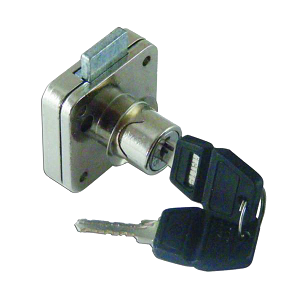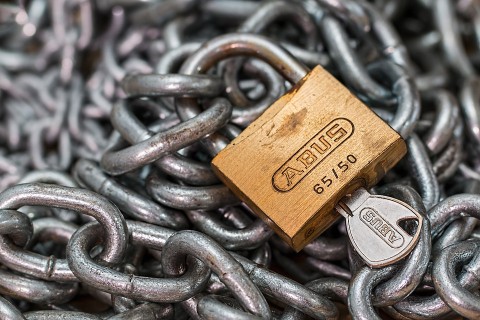What Is The Difference Between A Deadbolt And A Regular Lock?
There are many different types of locking system which are all designed for different purposes. This can be the type of item you are locking, where it is located and the level of security you require. If we are talking about door security, then internal doors typically require less security than an external door. Locks for internal doors are usually for privacy purposes, or in a commercial business you may lock internal doors for reasons of inter-company security, rather than to guard against external theft or vandalism. This is what you guard against with locks for external doors, and this goes some way to explaining the difference between a deadbolt lock and a regular lock.
Essentially, a deadbolt lock offers a much higher level of security than a regular lock, and hence deadbolts are usually installed in external doors.
What is a deadbolt lock?
A deadbolt lock is known for its robust construction and its parts include a solid metal bolt that is much bigger and stronger than the locking mechanism used for any other type of lock. This bolt extends further into the door jamb or striking plate when the lock is engaged, and hence offers a higher level of security. Because the bolt extends into the door frame it is much harder to force open and it is much harder to pick and manipulate.
In addition to providing excellent resistance to force, deadbolts are manufactured to be far more robust and durable. This means they are resistant to wear and tear and therefore:
- Can be used in harsher environments
- Last much longer and work more consistently than regular locks
- Offer a higher level of security
- Don’t require as much maintenance
There are various types of deadbolt lock, including standard, vertical and high-security variants. A standard deadbolt has a single cylinder design where the key cylinder is on the outside and there maybe a thumb turn on the inside. This is commonly used in residential settings. A high-security deadbolt lock has additional features such as a re-enforced strike-plate, heavy duty screws and a hardened steel bolt. All these features make the lock more resistant to drilling, picking and physical attacks, and hence a high-security deadbolt is more often used in commercial buildings and any residential setting where high security is required.
As well as anti-picking mechanisms, a high security deadbolt often also has a restricted key system. This can be a keyless system where a digital signal from a card, fob or smartphone or a unique number sequence activates the lock. Where physical keys can’t be duplicated or stolen, this adds another layer of security that differentiates a deadbolt lock from a regular lock.
Common types of regular lock
In comparison to the deadbolt lock, most other regular types of lock are used for internal doors only. These can include:
- Knob lock – where the locking mechanism is integrated into a door knob
- Padlock – a portable lock where the locking mechanism lifts out to release an item when the key engages it
- Spring bolt locks – a less substantial and robust version of the deadbolt, where a spring-loaded bolt retracts when the knob or lever is turned
- Lever handle locks – this is an easy to operate variant of the knob lock, where the locking mechanism is integrated into the handle instead of the knob
- Cam locks – cylindrical locks with a metal piece that rotates to lock and unlock, often used for cabinets and drawers, and hence relatively low-security items.
Contact MB Direct for help and support with deadbolts and all regular locks
If you contact our expert sales team at MB Direct we can help and support you with your choice of locking system. The deadbolt is ideal for high security needs, particularly external doors, but we can supply the most suitable locking system for any particular needs, be it commercial or residential. If you contact our team we can discuss your circumstances and operations and recommend the perfect lock for your requirements from our vast range of locks, so get in touch today.